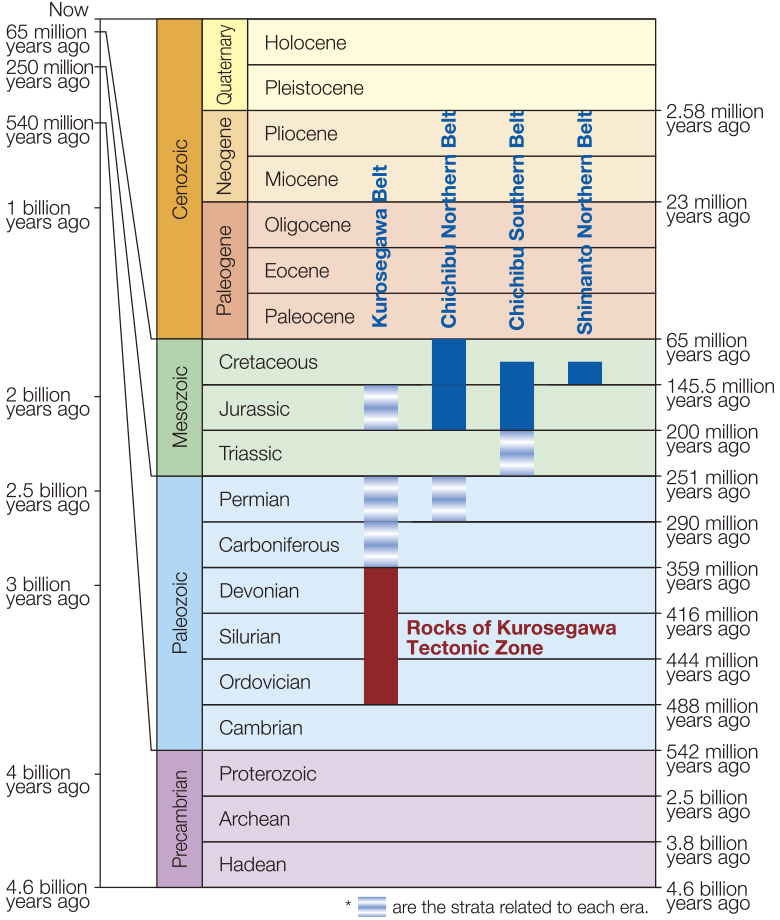1
In the warm seas, corals and other creatures build reefs upon underwater mountains, and in the deeper oceans, plankton shells accumulate on the ocean floor.

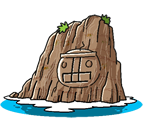

Seiyo City offers a diverse range of geological layers, through which we can observe and learn about the past of its oceanic plates
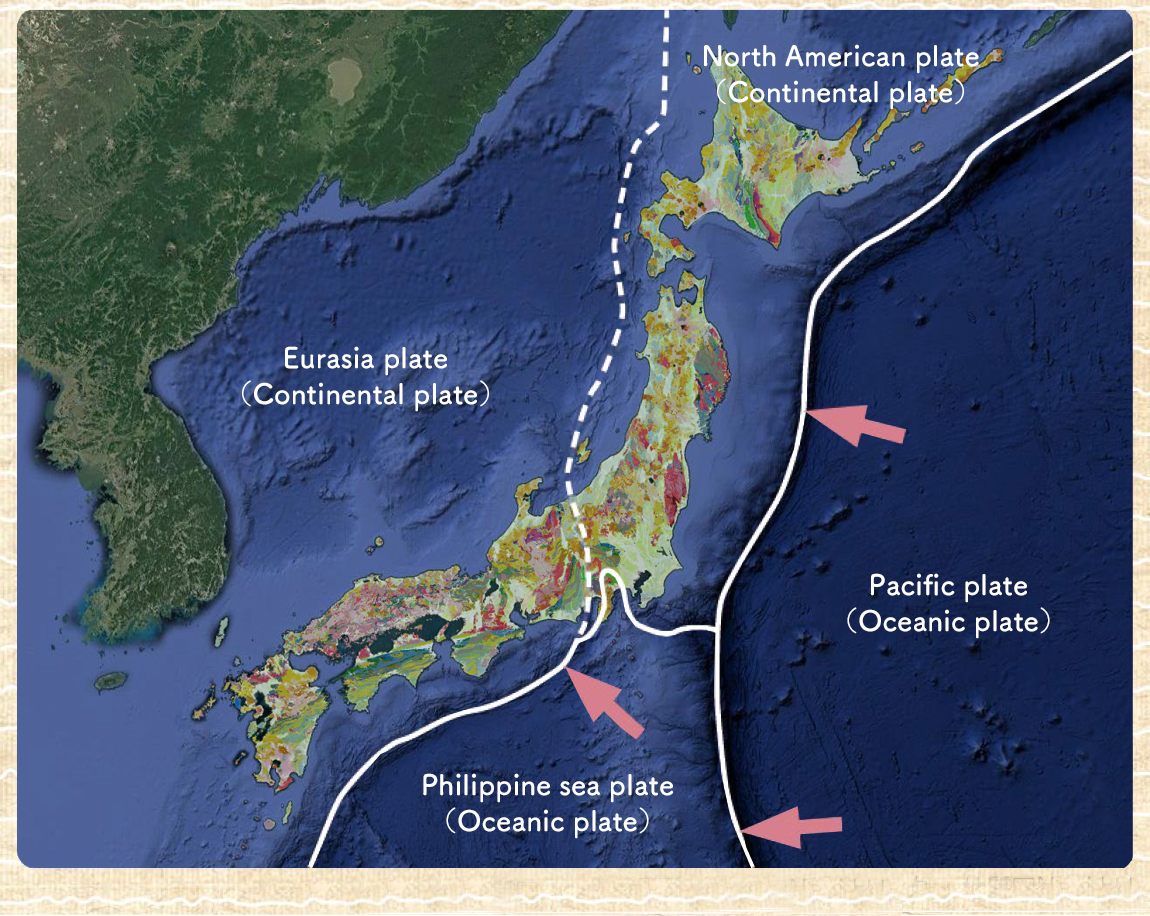
The Japanese archipelago lies on top of four plates that move little by little each year.Not only Seiyo City, but much of the Japanese Archipelago’s land is believed to have formed when oceanic plates moved and subducted, pushing the land up. Seiyo City in particular offers a diverse range of geological layers, through which we can observe and learn about the past of its oceanic plates.
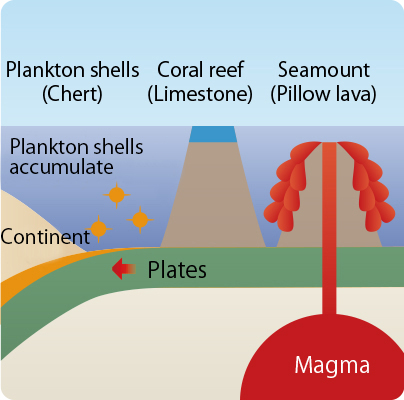
In the warm seas, corals and other creatures build reefs upon underwater mountains, and in the deeper oceans, plankton shells accumulate on the ocean floor.
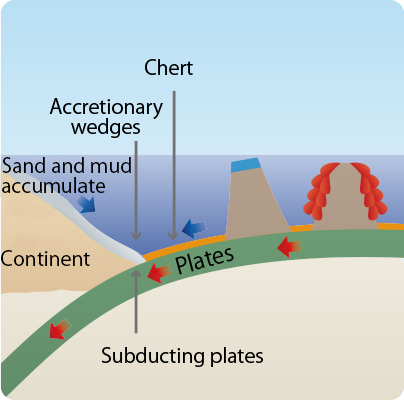
Oceanic plates, where underwater mountains and other features are found, approach the continents.
![]()
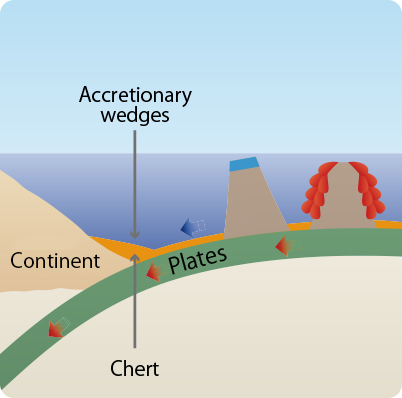
Chert from plankton shells is scraped off by the bottom of the continents and pressed onto the continent mud and sand that have accumulated in sea trenches. (This is referred to as "accretion.")
![]()
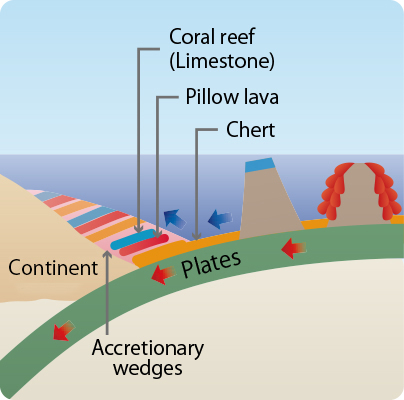
The reefs become limestone and move with the movements of the plates along with pillow lava, accreting to the bottom of the continents.
![]()
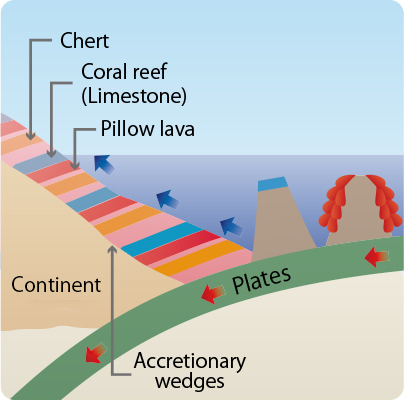
Layers accreted older periods are pushed up to the surface by new accretionary wedges that are continually created by plate movement.
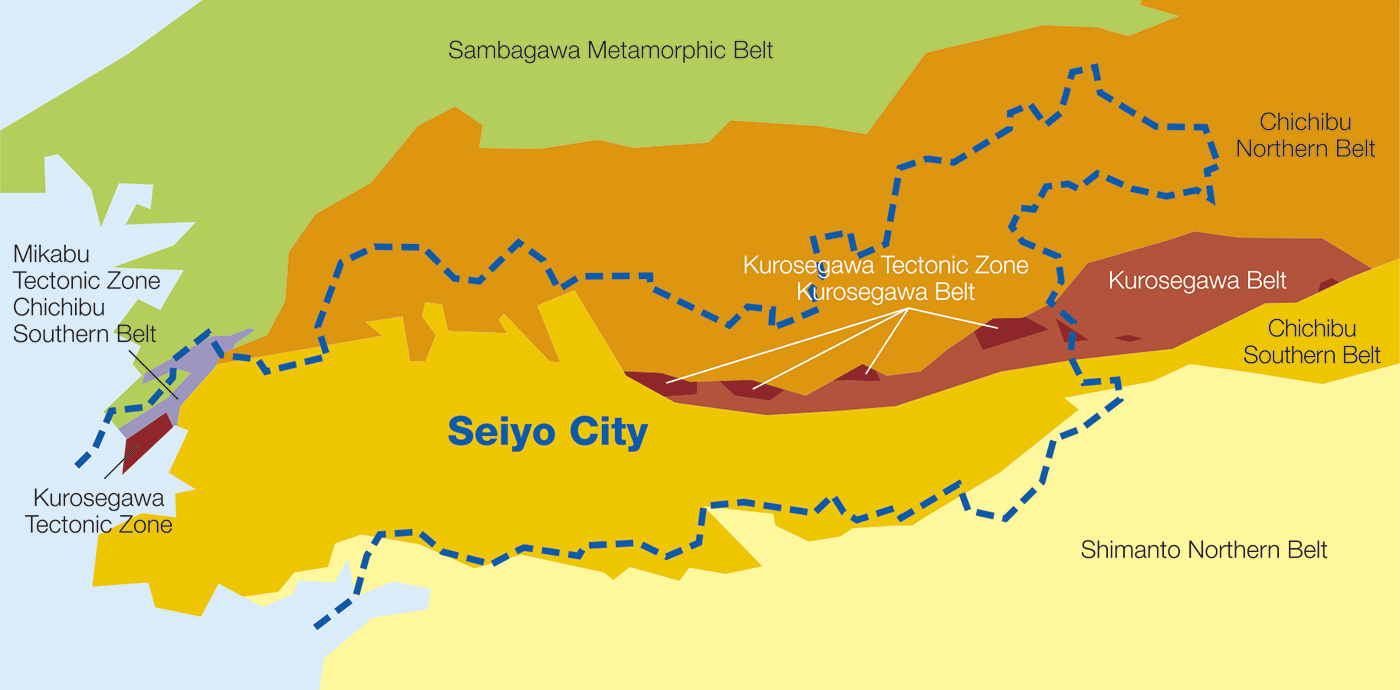
The geological structures formed by the moving oceanic plates are classified by their features and the period in which they were formed. The main geological structure that spreads through Seiyo City is Chichibu Belt, which was mainly formed in the Jurassic period of the Mesozoic era. And in this Tectonic zone the geological structure that is like no other: Kurosegawa Tectonic Zone. Kurosegawa Tectonic Zone was formed in the Paleozoic era, much earlier than Chichibu Belt, and the rocks composing its geological structure are different to others. Chichibu Belt is divided into the northern and southern belts at Kurosegawa Tectonic Zone and relevant groups (Kurosegawa Belt).
